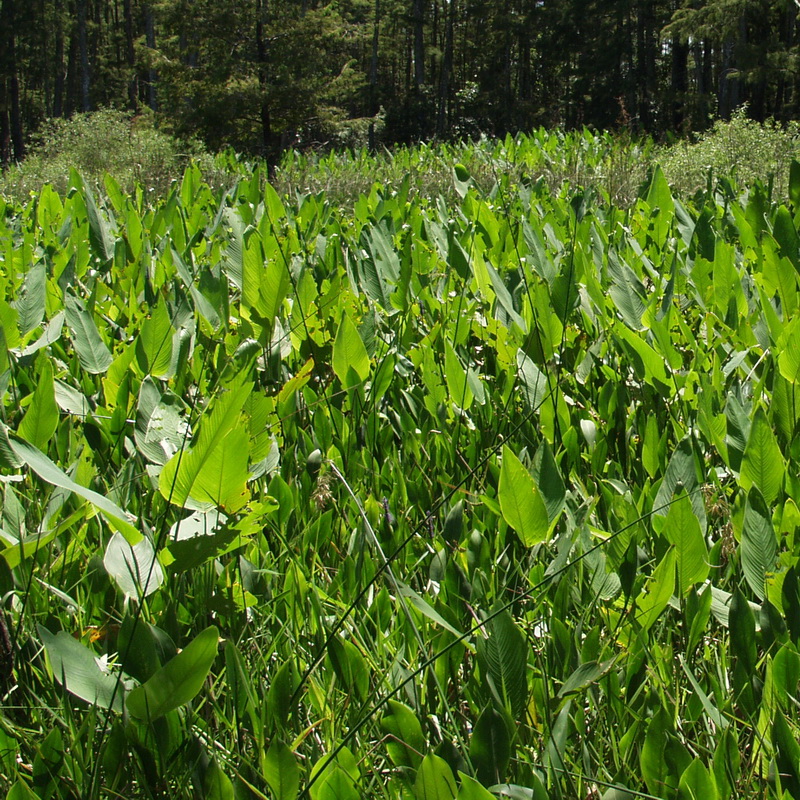Thalia geniculata
Photographs belong to the photographers who allow use for FNPS purposes only. Please contact the photographer for all other uses.
Alligator Flag, Fireflag
Marantaceae
Also known as Maranta geniculata
Plant Specifics
| Form: | Flower | |
| Size: | 6-9 ft tall by 3-10 ft wide | |
| Life Span: | Long-lived perennial | |
| Flower Color: | Blue,lavender | |
| Fruit Color: | NA | |
| Phenology: | Winter dormant. Blooms summer-fall. | |
| Noted for: | Showy flowers, Interesting foliage |
Landscaping
| Recommended Uses: | Used for wetland restoration. Attractive for planting in surface water management ponds. | ||||||||||||||||||||||||||||||||||||||||||
| Considerations: | Dies back in the winter. | ||||||||||||||||||||||||||||||||||||||||||
| Propagation: | Propagate from rhizomes or seed. | ||||||||||||||||||||||||||||||||||||||||||
| Availability: | Native nurseries, FNPS plant sales | ||||||||||||||||||||||||||||||||||||||||||
| Light: | Full Sun, Part Shade | ||||||||||||||||||||||||||||||||||||||||||
| Moisture Tolerance: |
always floodedextremely dry |
||||||||||||||||||||||||||||||||||||||||||
| (Aquatic ----- to ----- Stays Wet) | |||||||||||||||||||||||||||||||||||||||||||
| Moisture Tolerance: | Aquatic ----- to ----- Stays Wet | ||||||||||||||||||||||||||||||||||||||||||
| Salt Water Flooding Tolerance: | Not salt tolerant of inundation by salty or brackish water. | ||||||||||||||||||||||||||||||||||||||||||
| Salt Spray/ Salty Soil Tolerance: | Low/no tolerance of salty wind or direct salt spray | ||||||||||||||||||||||||||||||||||||||||||
| Soil or other substrate: | Loam, Organic material (muck), Sand | ||||||||||||||||||||||||||||||||||||||||||
| Soil pH: | |||||||||||||||||||||||||||||||||||||||||||
Ecology
| Wildlife: |
Provides hiding areas for water birds some of which hide their nests in patches of this tall plant. | |
| Insects: | Host plant for Brazilian Skipper (Calpodes ethlius). Single gray eggs are laid on the leaves. After emerging, Brazilian Skipper caterpillars make shelters out of leaves by folding the leaves over and securing them with silk. The caterpillars emerge from their shelters at night to feed, often causing severe defoliation. (North American Butterfly Association) | |
| Native Habitats: | Marshes, swamps, roadside ditches. Usually in areas with relatively high nutrients and relatively high light. Rarely under a dense canopy. |
Distribution and Planting Zones
Natural Range in Florida
USDA Zones
Suitable to grow in:
10A 10B 8A 8B 9A 9B

USDA zones are based on minimum winter temperatures






